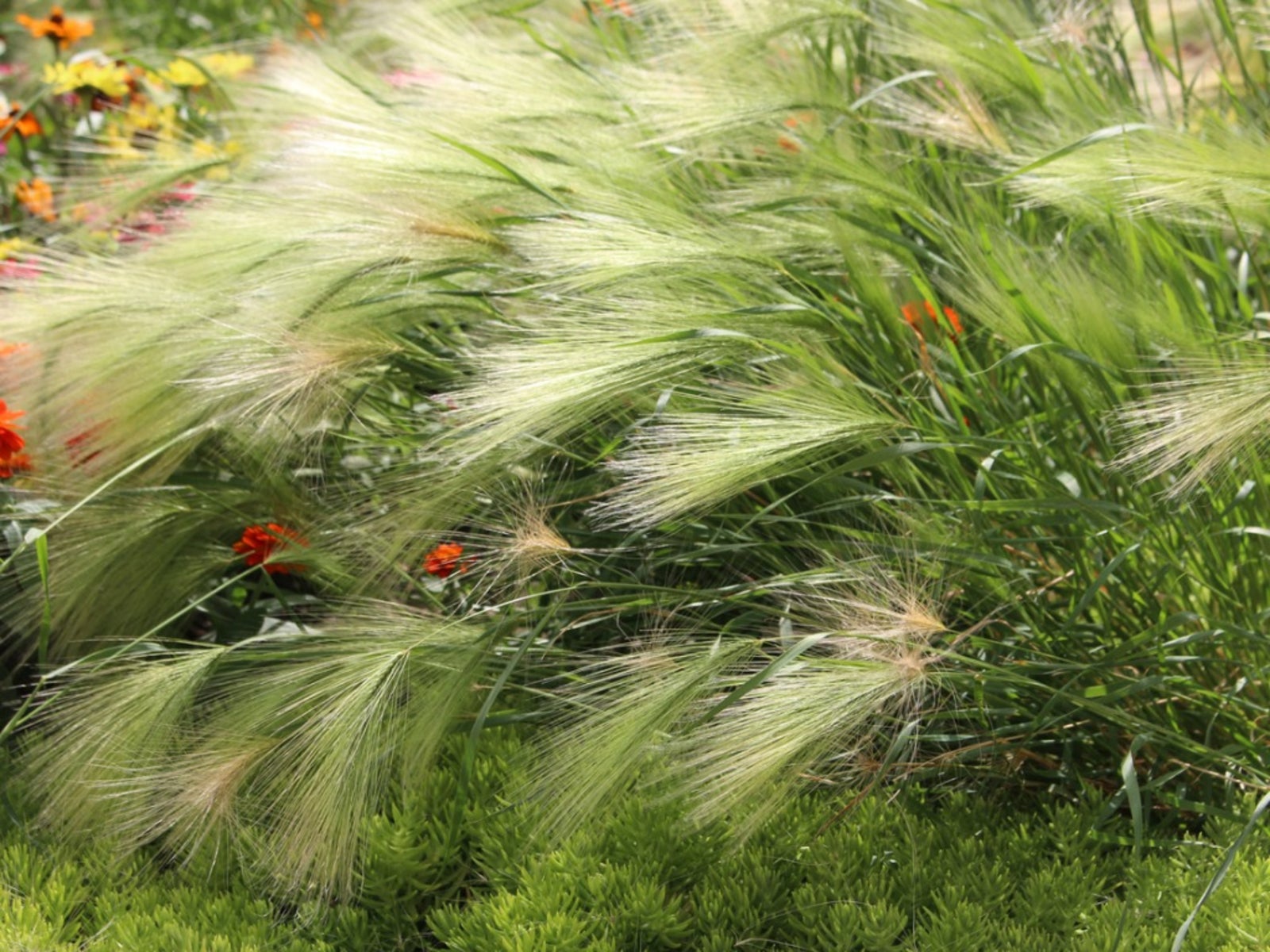Southwestern Ornamental Grass: Learn About Ornamental Grasses For Southwest Gardens


Anyone landscaping a backyard in an area with hot, dry summers should consider southwestern ornamental grasses. Unlike regular turf grass, ornamental grasses, especially native grasses, are drought tolerant and easy care, while offering real eye-appeal. There is more than one type of ornamental grass for southwestern gardens, so get ready to make some hard choices. We’ve made it easier for you with an overview of these grasses as well as some recommendations.
Gardening in the Southwest
Anyone gardening in the southwest is faced with the question of whether or not to install a lawn. Most people like the way a lush green lawn looks in front of a home, but the maintenance work isn’t easy, especially in the hot and dry southwestern regions of the country.
Grasses traditionally used for laws need irrigation, frequent mowing, and regular pest control. On the other hand, desert grasses for southwestern gardens are easy maintenance plants that require little care throughout the growing season.
Desert Grasses for Southwestern Gardens
Unlike lawn grasses, ornamental grasses are allowed to grow in the yard naturally. They shoot up to their normal height in their natural shape, growing anywhere between 6 inches (15 cm.) and 14 feet (4 m.), depending on the variety.
Gardeners love these grasses for their attractive foliage that moves in the breeze, their interesting textures, and distinctive shapes. Some ornamental grasses for southwest landscapes even offer flowers or attractive seedpods.
Southwest Ornamental Grasses
If you are gardening in the southwest you may not know which grasses to try. While there are many excellent native grasses that grow naturally in southwest landscapes, ornamental grasses from Asia and other places can also work well. Keep your climate in mind, since not every southwest landscape is equally dry. You’ll want to pick something that works with your weather.
Recommended Native Grasses
If your soil is organic and your rainfall averages at least 25 inches (63 cm.) per year, consider these options listed below. These tough grasses will be taller than you are when mature.
Gardening tips, videos, info and more delivered right to your inbox!
Sign up for the Gardening Know How newsletter today and receive a free copy of our e-book "How to Grow Delicious Tomatoes".
- Big bluestem (Andropogon gerardii)
- Switch grass (Panicum virgatum)
- Indian grass (Sorghastrum nutans)
If rainfall in your area averages between 18 and 24 inches (46-61 cm.) a year, consider these grasses that top out at about four feet (1 m.) tall.
- Little bluestem (Schizachyrium scoparium)
- June grass (Koeleria macrantha)
- Needle grass (Stipa spartea)
For semi-arid regions with less rainfall, grasses will be shorter. Consider buffalo grass (Buchloe dactyloides) or blue grama (Bouteloua gracilis).
Recommended Ornamental Grass Species from Asia
One of the most popular Asian ornamental grasses for the southwest are the Maiden grasses (Miscanthus species), like variegated Japanese silver grass. These grasses are beloved for their silky flower tassels that persist into winter.
Another popular and very showy ornamental grasses used in the southwest is feather reed grass (Calamagrostis x acutiflora ‘Karl Foerster’). This variety grows in upright clumps with straight, flower spikes that grow green in spring, turn golden, then fade in winter. Some of these imported grasses in this group are shade tolerant. These include Northern sea oats (Chasmanthium latifolium) and Korean feather reed grass (Calamagrostis brachytricha).

Teo Spengler is a master gardener and a docent at the San Francisco Botanical Garden, where she hosts public tours. She has studied horticulture and written about nature, trees, plants, and gardening for more than two decades. Her extended family includes some 30 houseplants and hundreds of outdoor plants, including 250 trees, which are her main passion. Spengler currently splits her life between San Francisco and the French Basque Country, though she was raised in Alaska, giving her experience of gardening in a range of climates.